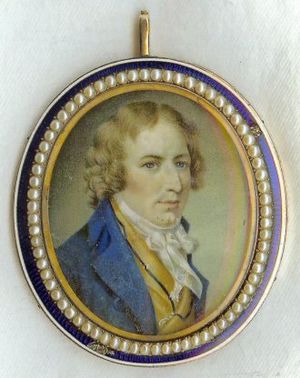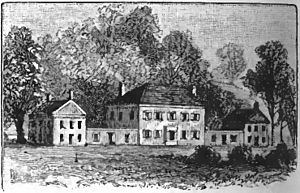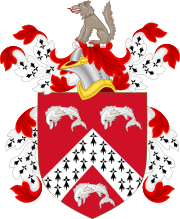Harman Blennerhassett facts for kids
Harman Blennerhassett (born October 8, 1764 – died February 2, 1831) was an Anglo-Irish lawyer. He was part of a group called the Society of United Irishmen. He moved from Ireland before a big rebellion in 1798.
Harman became a well-known plantation owner in what was then western Virginia (now West Virginia). He got caught up in a secret plan known as the Burr conspiracy. This plan was thought to be a military plot to separate the Louisiana Territory from the United States. Because of this, he was arrested twice and lost all his money. He spent his final years living in England.
Contents
Harman Blennerhassett's Early Life
Harman Blennerhassett was born in Hampshire, England. His parents were Conway Blennerhassett and Elizabeth Lacy. When he was two years old, his family moved back to their large estate in County Kerry, Ireland, called Castle Conway.
As a teenager, Harman went to Westminster School in London. In 1784, he started studying law at the Middle Temple, one of London's famous law schools. He finished his law degree in 1790 at Trinity College, Dublin, and began working as a lawyer in Ireland.
Family and New Ideas
In 1793, Harman joined a secret group called the Society of United Irishmen. This group first wanted to make changes to the government, but later became more focused on rebellion. In 1794, he married Margaret Agnew. She was the daughter of his sister Catherine.
Life on Blennerhassett Island
Harman Blennerhassett decided to move to America. He bought the upper half of an island in the Ohio River. This island is about 1.5 miles (2.4 km) downstream from what is now Parkersburg, West Virginia.
He built a grand European-style estate on the island. It had a huge mansion surrounded by beautiful gardens and lawns. For a short time, the Blennerhassetts' home was known as the biggest and most beautiful private house in the American West.
The Burr Conspiracy and Its Impact
One of the most famous visitors to the island was Aaron Burr, who used to be the Vice President of the United States. He visited the island three times. These visits led to the island becoming the main spot for his secret military plan in 1806–1807. This plan was thought to be a scheme to separate the Louisiana Territory from the United States.
The president ordered the arrest of Burr, Blennerhassett, and their followers. In December 1806, local Virginia soldiers took over and looted the mansion and island. Blennerhassett ran away but was arrested twice. He was put in a Virginia state prison. He was set free only after Aaron Burr was found not guilty in a long trial in 1807. The Blennerhassetts never went back to their island home. In 1811, the mansion was destroyed by a fire.
Later Life and Legacy
After losing his home and money, Blennerhassett had to find a way to support his family. He first tried farming cotton near Port Gibson, Mississippi, but he lost the rest of his money there. He then tried to work as a lawyer in Montreal, Lower Canada (from 1819 to 1822), but it was not successful.
In 1824, he returned to Europe. He lived with his family in Bath, England, and later moved to the Channel Islands, where he passed away in 1831.
The Blennerhassetts had six children, five of whom were their own, and one adopted. Three of their own children survived past infancy, all of them sons.
The Blennerhassetts' island mansion was rebuilt between 1984 and 1991 by the State of West Virginia. Today, the site is a state park called Blennerhassett Island Historical State Park. Visitors can learn about the island's history and explore the reconstructed mansion.
See also
- Blennerhassett Island Historical State Park
- Margaret Agnew Blennerhassett





